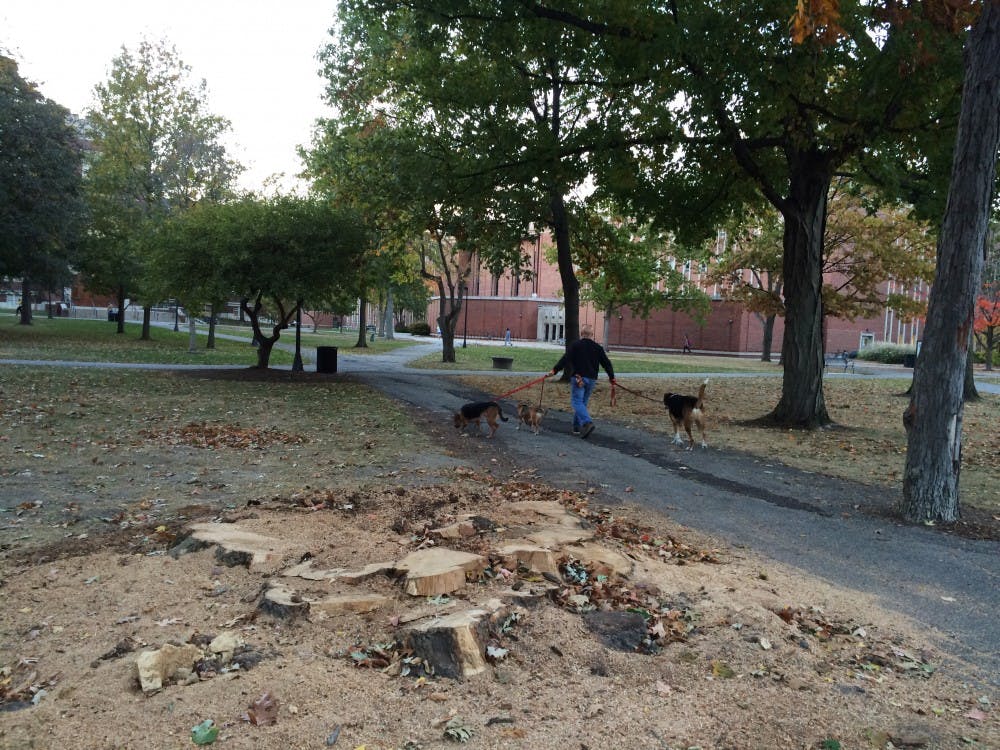The university is removing numerous trees in the Quad due to infections and damage.
An oak tree, two ash trees and one hickory tree have recently been taken out.
“We don’t take the tree removal lightly,” said Jim Lowe, associate vice president for facilities, planning and management.
The hollow base of the oak tree indicated it was damaged beyond saving. Due to its condition, it was possible for branches to fall off. The two ash trees were infected, and, as a result, their leaves were falling. The hickory tree had shown signs of root decay.
“The university will remove trees when ... it is necessary,” Lowe said. “We certainly don’t remove them unless it's due to the fact [that] it ... is infected and becomes a safety problem.”
The cost and time of tree removal depends upon the size of the tree.
“We have an experienced staff, and [they] are trained to do what they do. They are arborists,” Lowe said.
The university is constantly identifying when trees need to be protected and treated, Lowe said. When they are beyond treatment, they are removed.
Ball State has an active reforestation plan, so trees are always being planted.
“What is underway, you will also notice around campus, are a lot of new trees appearing,” Lowe said. “You can tell which ones those are because they have a watering base around them."
According to americanforests.org, a nonprofit conservation organization, a tree can absorb as much as 48 pounds of carbon dioxide per year.
“We are looking at multiple ways to reduce our carbon footprint,” Lowe said.





